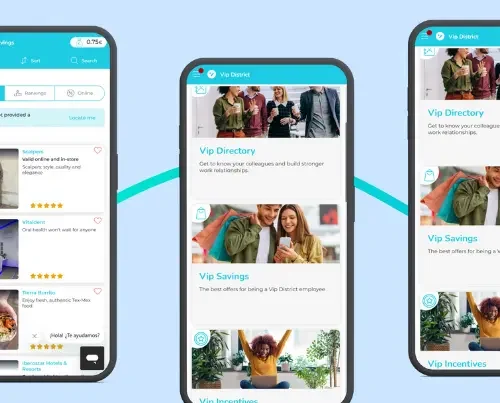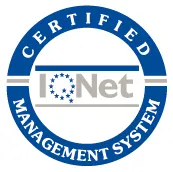
Human resources management is one of the most complex and crucial areas in any organisation. Problems in this area can severely impact morale, productivity and ultimately, the company’s financial performance. Below are ten of the most common HR problems along with possible solutions.
Table of Contents
1. High Employee Turnover
One of the biggest challenges is high employee turnover. According to a study by Deloitte, 37% of employees leave their job due to a lack of professional development and growth opportunities. High turnover not only generates direct costs in the recruitment and training of new employees but can also affect team morale and decrease the continuity of knowledge within the company. Click here to find out how much your company would save by reducing staff turnover by just 1%.
Solution: Implement professional development programmes, offer promotion opportunities and improve internal communication. These actions can significantly reduce turnover. Companies should focus on creating personalised career plans where employees can clearly see their future within the organisation. Additionally, fostering a culture of continuous feedback and recognition can make employees feel valued and committed to their personal and professional growth.
For example, some companies have opted to implement mentoring programmes, where more experienced employees provide guidance to newer ones, thereby helping them adapt and grow within the organisation. These initiatives not only promote skill development but also strengthen internal bonds and reduce the likelihood of employees seeking opportunities outside the company.
2. Lack of Employee Engagement
Employee engagement is crucial for productivity and retention. This, being one of the most common HR problems nowadays, however, is an area which many companies struggle with. Employee engagement not only affects performance but also directly impacts customer satisfaction, innovation and the company’s competitiveness in the market.
Solution: Foster a positive work environment, recognise and reward good performance and promote a sense of belonging in the company. It is vital for companies to understand what motivates their employees and adapt their strategies accordingly.
An example of this is Google, which has implemented comprehensive wellness programmes that go beyond simple monetary bonuses. They offer everything from in-office massages to psychological support, showing employees that they care about their well-being in all aspects of their lives. These types of benefits not only motivate workers but also increase their loyalty to the company.
3. Internal Communication Problems
Lack of effective communication can lead to misunderstandings, low morale, and decreased productivity. When internal communication is deficient, employees may feel disconnected from the company’s mission and vision, which can result in lower engagement and uninformed decision-making.
Solution: Implement internal communication tools such as an instant messaging platform, hold regular meetings and provide feedback surveys to significantly improve communication. Additionally, it is essential that management is transparent in its communication, sharing both the company’s successes and challenges with the team.
A good example of a successful internal communication practice is the implementation of weekly meetings in companies like Microsoft, where participation from all hierarchical levels is encouraged. These meetings not only allow the sharing of important information but also create a space for employees to express their concerns and suggestions, thereby strengthening organisational culture.
4. Discrimination and Workplace Harassment
Unfortunately, discrimination and harassment remain prevalent issues in many workplaces. According to the EEOC, over 72,000 workplace discrimination complaints were filed in 2019. Discrimination and harassment are not only illegal but can also lead to a toxic work environment, affecting morale and employee productivity.
Solution: Establish clear company policies against discrimination and harassment, provide regular training on diversity and inclusion, and create a safe system for reporting these types of behaviours. Companies should actively work to build an inclusive culture where diversity is valued and differences are respected.
Salesforce is an example of a company which has been recognized for its efforts to promote gender equality and diversity within the organisation. They have implemented pay equity audits to ensure fairness and established training and mentorship programmes to support underrepresented groups. These actions not only create a fairer environment but also enhance the company’s reputation and attract a variety of new talent.
5. Talent Management
Finding and retaining the right talent is a constant challenge. A LinkedIn report reveals that 76% of Hiring Managers consider attracting the right talent to be their biggest challenge. A lack of suitable talent can slow the company’s growth and limit its ability to innovate.
Solution: Develop a strong recruitment strategy, make use of candidate assessment tools, and offer competitive benefit packages. It is crucial that companies identify the key skills they need and develop an employee value proposition that highlights why candidates should choose to work for them.
Many companies are also moving to use artificial intelligence in the recruitment process as a way of identifying candidates who not only meet the technical requirements, but are also a good fit with the company’s culture. Companies like Unilever have begun using neuroscience games and AI-driven video interviews to assess candidates, resulting in faster and more effective hiring processes.
6. Inadequate Performance Appraisal
Poorly managed performance appraisals can demotivate employees and may fail to reflect their true abilities and contributions. A performance appraisal that is perceived as unfair or ineffective can lead to dissatisfaction and loss of trust in management.
Solution: Implement a continuous and transparent appraisal system that includes regular feedback and clear objectives. Appraisals should be seen as an opportunity for growth, not just a bureaucratic formality. Moreover, it is important that employees receive training on how to self-assess and how to give and receive constructive feedback.
Companies like Adobe have chosen to eliminate annual performance reviews and instead adopted a more agile “check-in” approach. This more dynamic and relevant approach allows managers and employees to discuss progress, challenges, and goals in a more meaningful format, leading to greater satisfaction and productivity.
7. Work-Life Balance
Work-life balance is crucial for the health and well-being of employees. However, many employees struggle to find this balance, which can lead to high stress levels, burnout and a decrease in productivity.
Solution: Offer flexible work options, promote a culture that values time off and provide resources for employee well-being. Flexible work policies, such as teleworking and flexitime, have proven to be effective in improving work-life balance, especially within a post-pandemic context.
A success story in this area is Buffer, a company that has adopted a 100% remote work policy. They also offer benefits such as unlimited time off and mental health programmes, demonstrating that they care about the overall well-being of their employees. As a result, they have seen an increase in productivity and employee satisfaction.
8. Adapting to Change
Resistance to change can be a major obstacle for companies seeking to innovate and adapt to new trends. Whether it’s the implementation of new technology, a change in internal processes, or organisational restructuring, resistance to change can slow progress and create internal friction.
Solution: Clearly communicate the benefits of the proposed change, involve employees in its introduction and provide any necessary in-company training to adapt to new tools and procedures. Leaders must be early adopters of change and serve as role models.
For example, when Microsoft decided to adopt a more collaborative and less hierarchical work culture, they implemented a “Change Culture” programme that involved all the levels within the organisation. Through workshops, training, and constant communication, they were able to transform the mindset of their employees, resulting in a more agile and competitive company.
9. Measuring Employee Satisfaction
Measuring employee satisfaction is essential for identifying areas for improvement and maintaining a positive work environment. However, many companies do not have an effective system for measuring this satisfaction, which prevents them from making informed decisions on how to improve the work environment.
Solution: Use metrics like eNPS (Employee Net Promoter Score) to measure and analyse employee satisfaction. These types of metrics allow companies to gain a clear picture of how their employees feel and which areas need attention.
An example of good practice in action is Zappos’ use of eNPS. They have used this tool not only to measure satisfaction but also to collect detailed feedback that is then used to implement specific improvements. This proactive approach has allowed Zappos to maintain high levels of satisfaction and employee retention.
10. Wage Inequality
Wage inequality remains a significant problem in many organisations. Research from Payscale indicates that women earn approximately 81% of what men earn in similar roles. This inequality is not only unfair but can also damage morale and tarnish the company’s reputation.
Solution: Conduct regular pay audits, establish wage transparency policies, and ensure that all employees receive fair and equitable compensation. Companies must commit to closing the gender pay gap and offering equitable opportunities for all employees.
One notable example is Salesforce, which has conducted multiple salary audits and adjusted salaries where they have found disparities. Furthermore, they have also implemented mentoring and leadership development programmes specifically for women, thus ensuring that they have the same opportunities for advancement and development as their male counterparts.
Addressing these common HR problems proactively and strategically can transform the work environment, improve employee retention, and increase productivity. Companies that invest in effective solutions to the above mentioned challenges will see significant returns in employee satisfaction and engagement.
Implementing our proposed solutions will not only improve your company’s work environment but also contribute to its overall success. In an increasingly competitive market, a company’s ability to effectively manage its human resources can be the difference between success and failure.
Moreover, by focusing on creating a positive and equitable organisational culture, companies will not only attract and retain top talent but also position themselves as leaders in social responsibility and business ethics. This long-term vision is key to sustained growth and prosperity in today’s competitive business environment.
New to Vip District? Contact us and find out what our platform has to offer!








